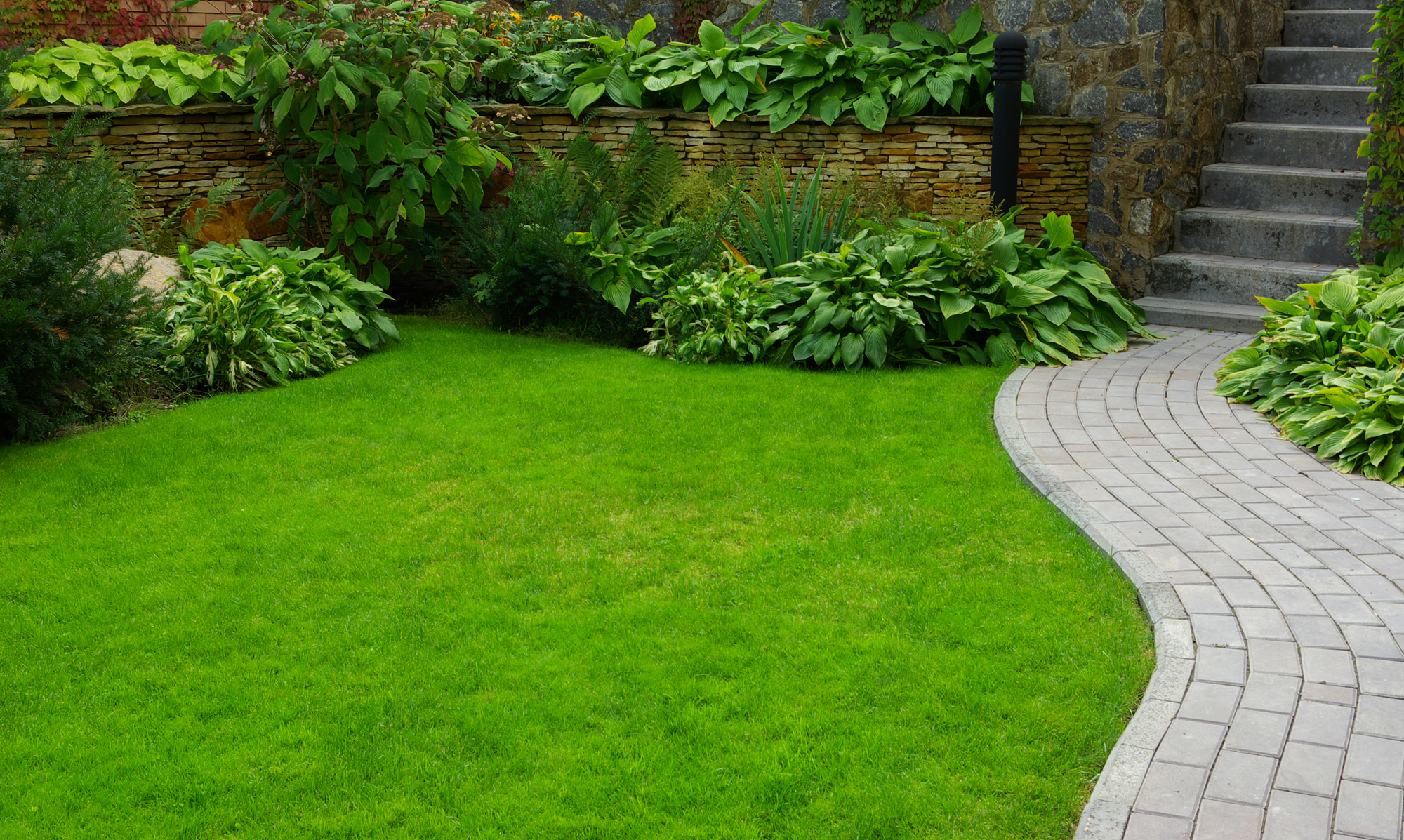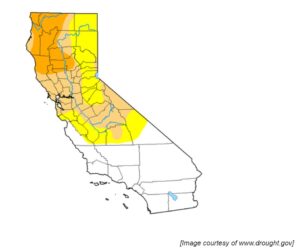
Living in California means living with drought.
For those residents who were alive in the mid-1970s, you might remember the severe drought that beleaguered the state back then. Water conservation and drought-resistant landscaping was in vogue and many people got rid of their lawns for the first time.
Fast forward to 2011.
According to statistics from the Drought.gov website, the longest duration of drought in California lasted 376 weeks beginning on December 27, 2011 and ended on March 5th, 2019.
The most intense period of drought occurred the week of July 29, 2014 where D4 level of drought-affected over 58 percent of California. D4 is defined as “Exceptional Drought – Exceptional and widespread crop/pasture losses; Shortages of water creating water emergencies”
Is California Having Another Drought?
Actually – and unfortunately – we are.
Here is a recent drought map of California from the government website www.drought.gov:

Key to Drought Intensities:
- White: No Drought
- Yellow: Abnormally Dry
- Tan: Moderate Drought
- Orange: Severe Drought
The same government website that monitors drought conditions throughout the United States, reported that as recently as April 14, 2020, there were 10,642,000 residents in drought areas with 3,442,000 of those residing in abnormally dry areas.
This represents 29 percent of the state’s population and, of those, 9 percent are in abnormally dry areas. And Sonoma County is in the heart of what is designated as a D1 – Moderate Drought area. The website defines this as resulting in some damage to crops and pastures, some water shortages developing, and voluntary water-use restrictions requested.
In fact, the County of Sonoma Water Agency webpage states that.
“With dry conditions and water demands increasing, Sonoma Water encourages residents to use water efficiently.”
Unfortunately, no one can predict with any certainty where this current climate trend will take us going into next year. However, given the state’s propensity for drought and the rising costs of water for residents, it makes sense to opt for a drought-resistant front yard anyway.
Six Options for a Drought-Resistant Front Yard
If you live in a house in almost any kind of residential neighborhood it’s quite likely you have a front yard. And, if you are like most homeowners or renters, you prefer to have a green and thriving lawn, perhaps with a bit of landscaping.
However, if you are like most people with lawns, you also know that watering that lawn and landscaping can be costly and not very efficient in terms of water conservation. So, what can you do?
Here are six landscaping options for creating a more drought-resistant front yard that will also be more water-use efficient. (And save you money!)
Decorative Grasses in Lieu of a Lawn
While it’s understandable that you might miss having a lawn, there are advantages to transitioning to decorative grasses. You can add them pretty much anywhere you currently have lawn grass, they use far less water, and they don’t have to be mowed.
Among the wide number of varieties available, here are three that flourish in Sonoma County:
- California sweet grass grows well in shady conditions, needs average to low water, and has small white flowers
- Maidengrass is an attractive, clumping ornamental grass with silvery white blooms in the late summer
- Blue panic is a perennial warm-season bunch grass that grows in large, dense tufts
Add or Replace Groundcovers
A drought-resistant groundcover is great for putting down roots to prevent soil erosion and adding color, while requiring little maintenance to keep them healthy.
There are many drought-resistant groundcover plants to choose from and these two examples both do well in the Sonoma County climate. The biggest consideration is whether your yard is primarily in the sun or the shade during the day:
- In a mostly sunny space, a good choice is rock rose, which is drought and heat tolerant and does best in well-drained soil
- In a yard with mostly shade, try creeping barberry, a tough and attractive spreading shrub with blooming yellow flowers in mid-spring followed by blue berries in early summer
Colorful Alternatives for Flower Beds
Many traditional annual flowers won’t do well with strict water conservation, but consider the wide variety of robust and drought-resistant perennials that also have vibrant blooms – and require much less attention. Here are some local favorites:
- Autumn Joy is a deciduous succulent with deep-pink to bronze flowers, growing to two feet tall and prefers full sun with well-drained soil
- Purple coneflowers are hardy, drought-tolerant, and long-blooming, and they are being cultivated in an increasing range of colors
- Creeping Phlox is a hairy, bright-green, evergreen foliage with violet, pink, or white flowers that bloom in late spring/early summer, preferring full sun and fertile, well drained soil
Think Indigineous, or Native, Plants
For the most part, many of the drought-resistant plants suggested so far come from other areas around the country and even other places on the globe. However, it’s possible to buy plants for your yard that will thrive in the California heat and are also native to the area. Some to consider include:
- Apricot Mallow is a perennial shrub that is great in a dry garden with orange flowers and an excellent butterfly plant
- California sagebrush is extremely drought tolerant, tough and requires little care, and is fast growing up to three feet tall
- Manzanita: these evergreen shrubs have delicate looking pink blossoms that flower in late winter to early spring.
- Arroyo de la Cruz Blue-Eyed Grass, a beautiful wildflower that blooms violet with golden stamens in the spring and summer and prefers full sun with little or no summer water
Include Decorative Stone Structures
In addition to plants and grasses, consider using decorative stone, gravel, or aggregate. These materials can be used to create paths, borders, and decorative stone structures such as arches or dry “stream beds.”
Along with the decorative stone, you can use materials for hardscaping. What is hardscaping? According to the website The Spruce,
“Hardscape consists of the non-living elements of landscaping, such as a brick patio, a stone wall, or a wood arbor. It is one of the two major subcategories of landscaping, the other being softscape.”
Other examples of hardscaping include paved areas, driveways, retaining walls, and stone or brick walkways.
Next Steps for Getting a Drought-Resistant Yard
Locally, there are resources available to help you with your planning and plant selections including the Sonoma-Marin Saving Water Partnership website.
Also, don’t hesitate to contact us for your drought-resistant garden and landscape needs. We know that making so many decisions can easily overwhelm you and we’re here to answer any questions you might have about getting started on drought-tolerant garden design.
Ready to spend less time maintaining your yard and more time enjoying it with family and friends? Contact us today to learn more about transforming your home’s landscape and lawn.
